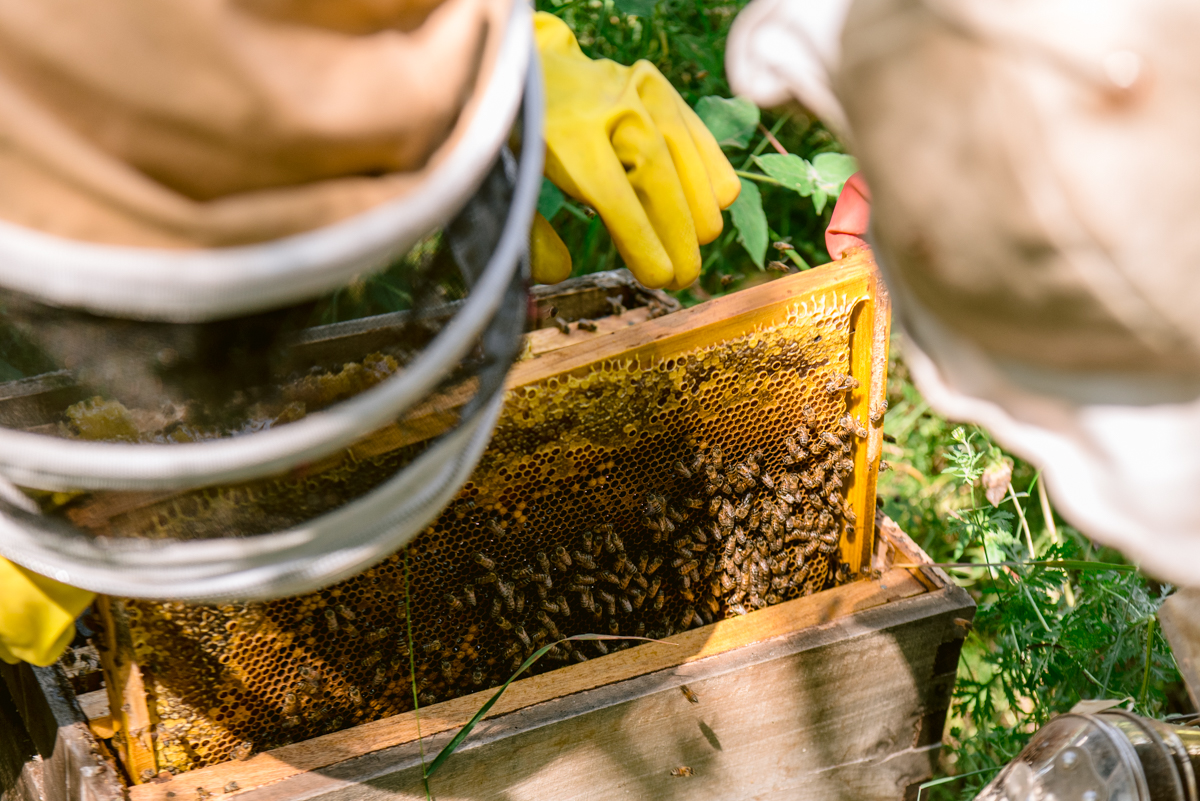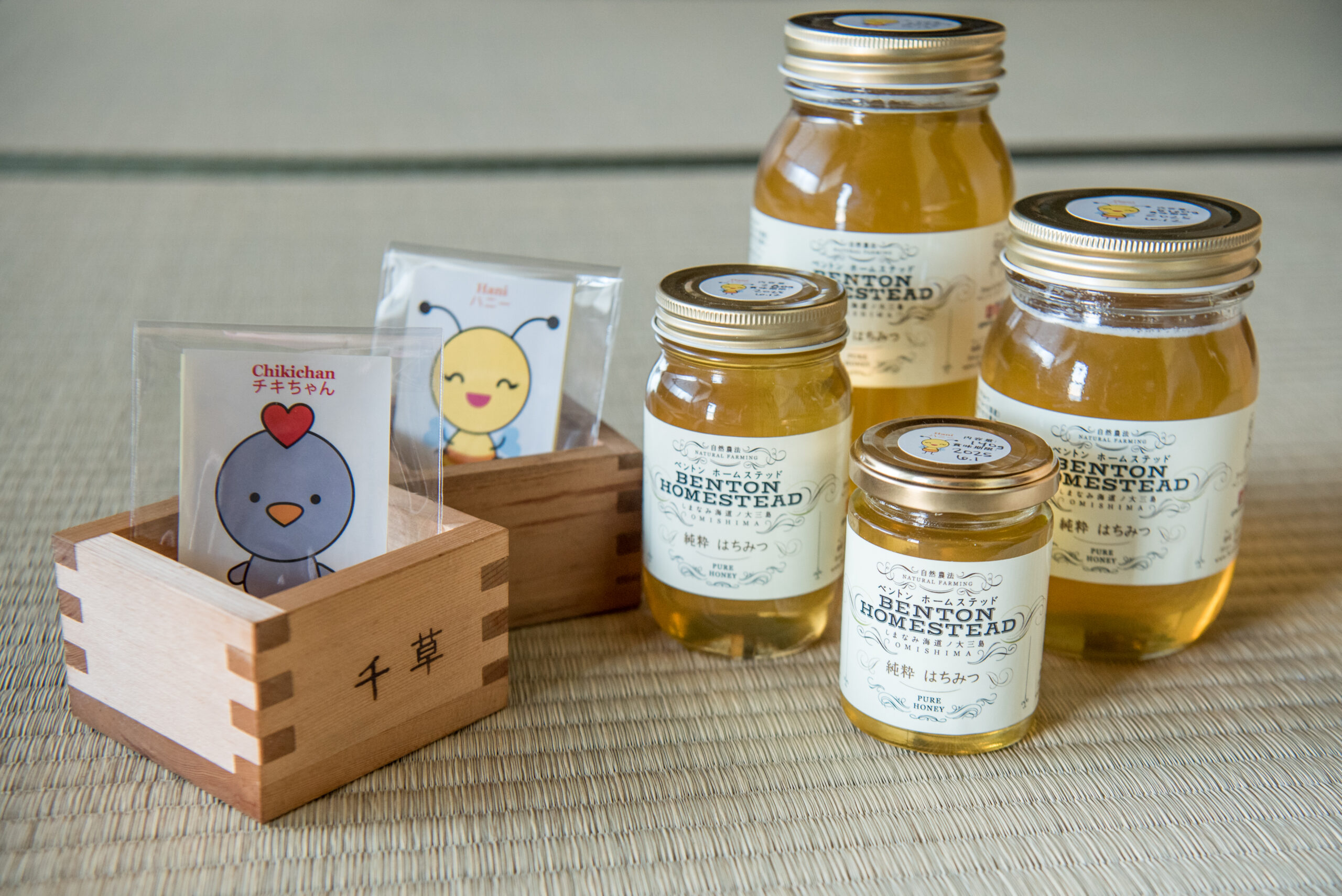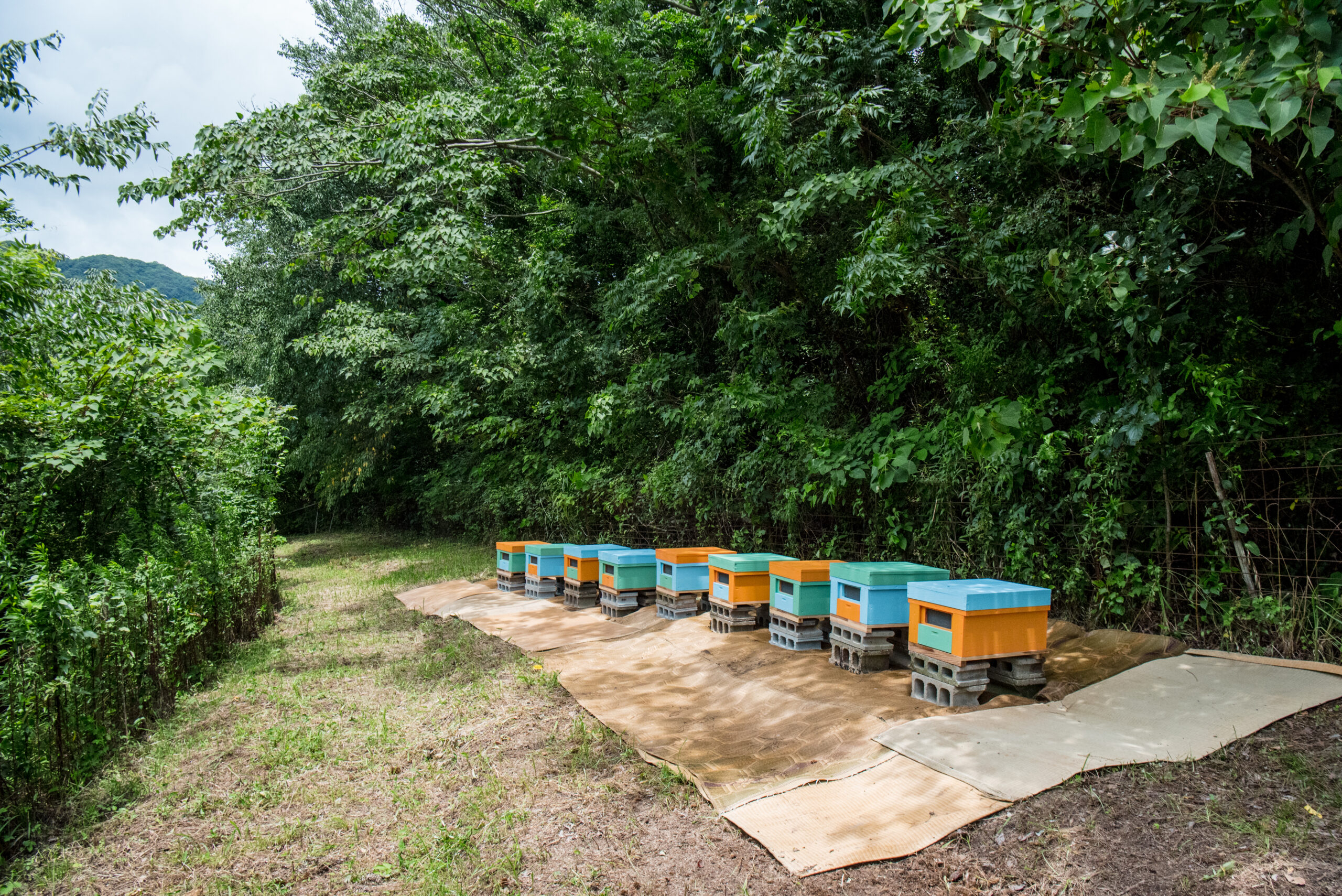While staying at House-Sit #7 in Huayapam, we had the pleasure of helping a local beekeeper with her hive inspections. As you know, we very much miss our honeybees, and have hopes of building a honeybee business, once we find our next home. So this was a great opportunity to get back in touch with the pollinators!
These beekeepers have three hives with really interesting, different histories. The first hive has standard Langstroth frames (one deep brood box and two honey supers) and was purchased as a nucleus colony from another local beekeeper. The second hive also has standard Langstroth frames (one deep brood box and one honey super) but was rescued from a tree in the village. And the third hive decided to move in to one of their empty bee boxes, and built their own freestyle comb inside, that vertically spans three hive boxes; this is quite unusual but very interesting to see.
However, the situation surrounding the hive inspection was not ideal. A few weeks prior, they had spent time trying to clear the vegetation around the hives, to keep the apiary clear. The bees responded negatively to their presence, but instead of taking it out on the beekeepers, they sadly stung a nearby donkey, who did not survive. Heartbreaking. The beekeeper suspects that many hives in the area have some of the Africanized bee genetics, which causes the colonies to be more aggressive and respond more erratically to perceived threats.
Based on this reaction, the beekeepers decided they would like to move the hives to a new location in the mountains, about one mile outside the village. Their top priority is hive health and happiness. So we helped come up with a plan for the best strategy for moving these hives, and preparing for their future: First, do a hive inspection. Then, harvest the excess honey, so the boxes will be easier to move. The next day, move them to their new location. Once they’re in place, replace the honey supers with new empty boxes they can begin filling again. And lastly, consider replacing the colony queens with new, friendlier queens, which will give the hive all new genetics within a few months!
So, back to the first step: Their hive inspection. We arrived at the property shortly before noon, and made our way through the brush to the apiary. I must admit, it was very beautiful to see them so “natural” and surrounded by sunflowers, a source of nectar and pollen completely surrounding their hives. But of course, it makes inspections and maintenance increasingly difficult, as we had to cut out a space for us to access the hives, and I suspect, put the colonies on edge, as we were clearing around their homes. As a side note: This is one of the (many) reasons we loved having our bee colony in our chicken yard: the hens kept the grass down around the hive, and the honeybees didn’t bother the hens.
I’ll be totally honest: We were chased out of the apiary three times over the course of the inspections, from multiple stings. The first time was a moment I’ll never forget. I knew it was going to happen for about a minute beforehand, because the sound of their flight patterns changed! They went from making a round, curious sound to an angry, angular sound. I said out loud, “Oh no”, as we were of course fully surrounded. It took a moment for them to share the pheromone, then they all started stinging at once. Of course, I feel this is partly our own fault, because they were only stinging us on pieces of dark clothing (my pants, and Evan’s socks). We know that we’re supposed to wear light colors for hive inspections, but we’ve been living out of our car for a year, so we’re not exactly traveling with bee suits, haha.
But, after running up the hill, getting the bees off of us, and letting the colonies have time to calm down, we tried again. Two more times, actually. And eventually, the bees did seem to soothe, as the second portion of the hive inspections was more calm, without any stings.
We’re happy to report that all three of their hives are healthy! If anything, they’re honey-bound, which means, both their brood box and their honey supers are bursting at the seams. The beekeepers will have a great honey harvest! And of course, the colonies will be left with enough honey in their brood box to maintain the health of the hive, and will be very happy in their new mountainous home.
Thank you to Melissa for inviting us into her apiary, and introducing us to her thousands of honeybees! It was a very different experience than we’ve ever had before, which of course is always helpful, as we continue to learn about honeybees and other pollinators around the world. We can’t wait to be beekeepers again!














You can find more of my photography work, here:
Dani Benton | Dani Benton Photography | www.danibentonphotography.com | Print Shop
Soon booking around Omishima island, in Imabari, Ehime, Japan » Please ask about location and availability!
Instagram | Facebook | Signal | WhatsApp | Buy Me a Coffee
Yelp | Pinterest | Flickr | Google | Wedding Wire | The Knot | LinkedIn
Formerly: Dani Mouser | Formerly Located: Dallas, Oregon » Portland, Oregon » New Orleans, Louisiana » Mexico
Thanks for reading,
Dani & Evan Benton





